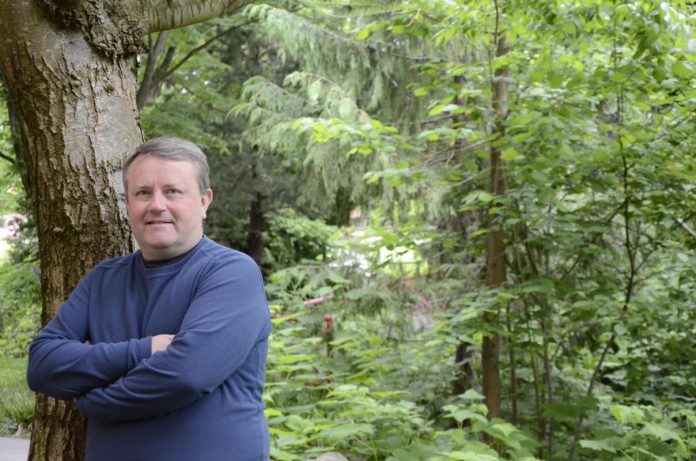Dr. Olav Lian, Earth scientist and director of UFV’s Luminescence Dating Laboratory, received a five-year grant totalling $110,000 from the Natural Sciences and Engineering Research Council (NSERC) of Canada to continue his current research.
He is one of three scientists at UFV to have received NSERC funding this year to continue their research. Dean of science, Dr. Lucy Lee, and associate professor of physics, Dr. Derek Harnett also received research funding.
The NSERC application is made of three parts. They want to know what you accomplished with previous funds, what you plan on doing if they fund you this time, and how you will train students.
While the research doesn’t need to be ground-breaking, Lian said it does have to be important enough for the NSERC to want to fund it.
“There’s hundreds of university and government researchers in Canada applying for the same pot of money, so it’s quite competitive,” said Lian.
A significant part of the application is students training.
“It’s hugely important. If I happened to do groundbreaking research but I hadn’t trained many students, I would probably have a hard time getting any new money. But, without students, less research would get done,” said Lian.
Since beginning his research career, Lian’s studies have focused on how a landscape evolves as a result of long-term climate change.
“When I’m talking long-term, I mean thousands and thousands of years. I’m interested in the big stuff that happens, like the effect of glaciers coming and going,” said Lian.
Lian’s main project over the next five years will look at the timing and changes to the coast of British Columbia since the end of the last glacial period, about 15,000 years ago.
He and his UFV team, which includes research associate Dr. Christina Neudorf, will be collaborating with other earth scientists, archaeologists, and anthropologists associated with the Hakai Institute and UVic, who are working to understand the character and timing of the migration of people down the coast from what is now Alaska following the retreat of the ice age glaciers.
Although some theorize First Peoples migrated from Alaska through an ice-free corridor near what is now the western edge of Alberta, the team Lian works with are researching whether it is possible that people, in fact, followed the western coast down from Alaska.
“You’re walking for a long, long way, maybe stopping in places for a few thousand years. If you’re going through that ice sheet corridor, what would you eat? It was likely a barren arctic tundra. But, on the coast, there would be all sorts of things to eat,” said Lian.
Lian will be dating sand grains at dig sites and natural exposures along the coast using optical dating at UFV’s Luminescence Dating Laboratory, the only one in Western Canada.
“We’re looking at electrons that accumulate in special defects in the crystals that make up the sand grains,” said Lian. “We read the little ‘clocks’ that are inside them.”
Electrons accumulate over time when the sand grains are buried in a landform in the dark, and rapidly empty when exposed to light when the landform is eroded by human activity, or by natural erosion.
“So, we go to a landform and take the sand grains out very carefully so they stay in the dark. Then we take them to our laboratory that has special lighting in it so the sand grains don’t get reset by mistake, and we use experiments to read those clocks,” said Lian.
The technique is used to date mineral (sand) grains that are beyond radiocarbon dating’s range of 50,000 years. Under good conditions, optical dating can date the last exposure of sand grains to light as far back as 500,000 years ago. And it is also useful for younger samples in circumstances where there is no organic material present, which is required for radiocarbon dating.
An important part of Lian’s grant money will go to training UFV students. The technique is very experimental, with various experiments needing to be performed to fine-tune and test the method for different circumstances and environmental conditions.
“It’s almost like we’re developing the technique every time we apply it somewhere, and that’s what makes it a great training tool for students. We have to train them on how to think, almost as someone would if they were inventing something,” said Lian.
“There’s now more research and associated student training going on at UFV compared to when I arrived here 13 years ago, and it’s good. I’d like to see more, though, and more faculty members bringing in external grants to facilitate it. But then I’m greedy about things like that. I want to see more student success, and more interesting student research opportunities; involvement in real research while an undergraduate gives students a significant advantage when applying to graduate school, or when looking for employment.”


